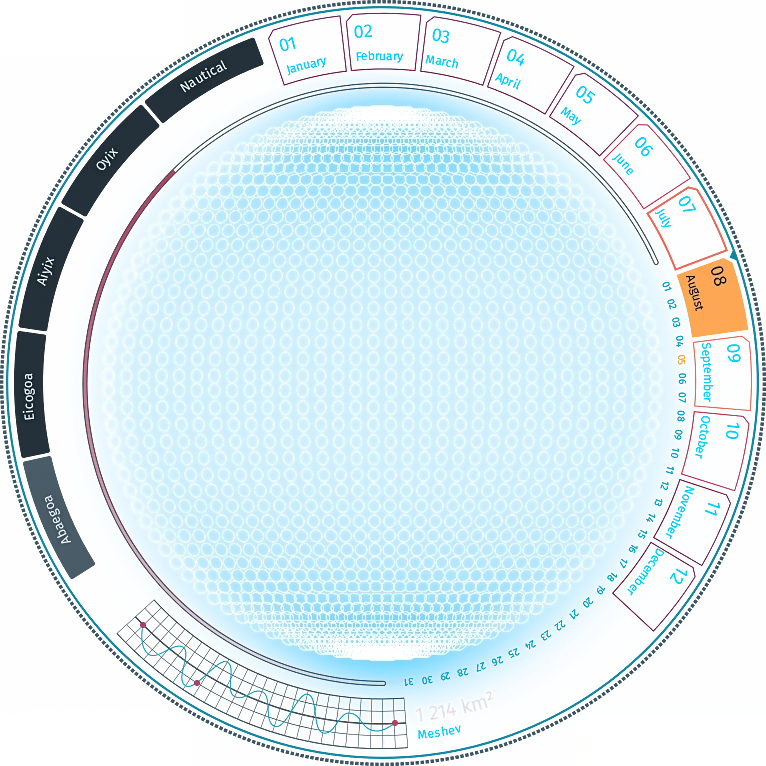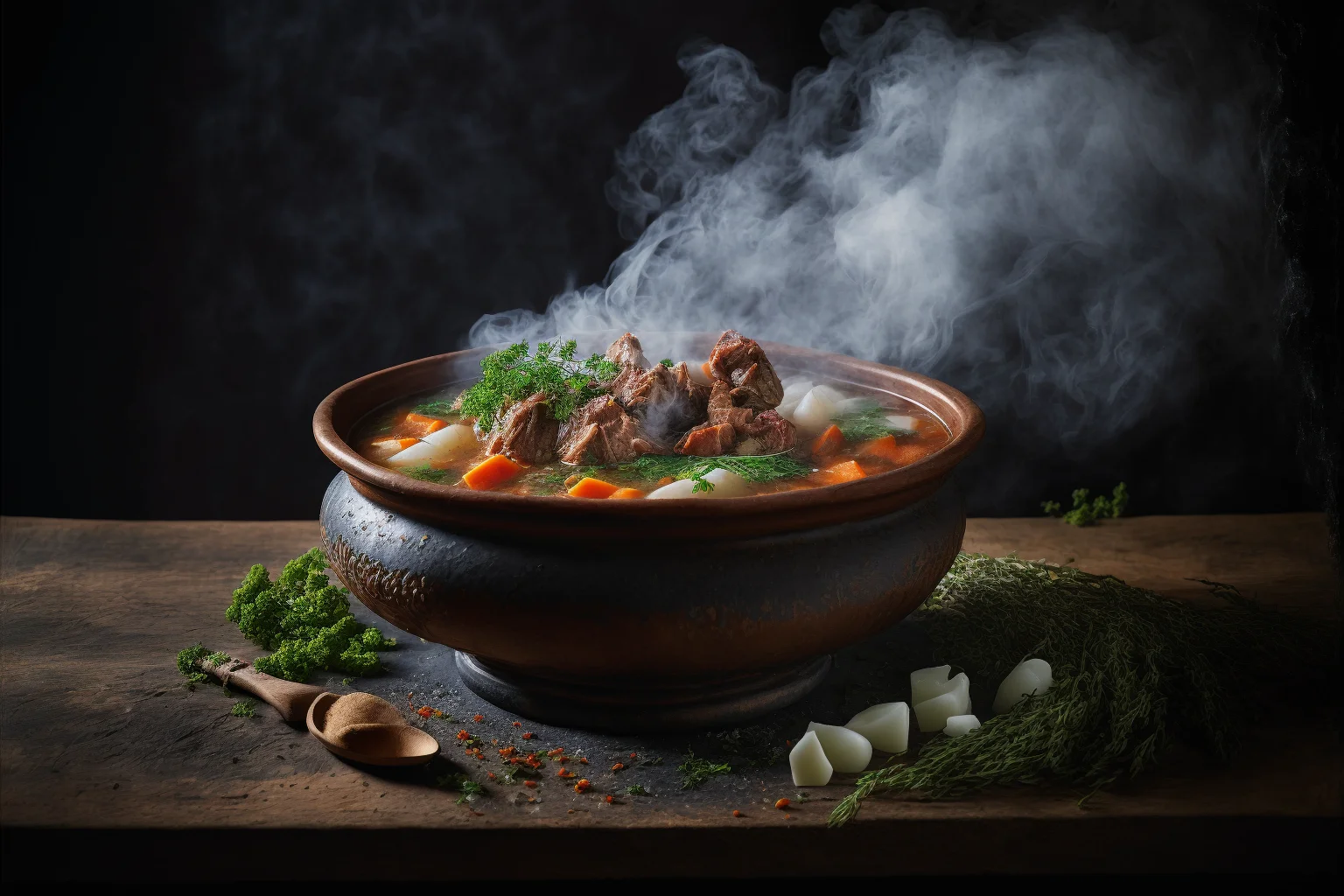Kjersekjøtt (ˈkjeːʂəkjøt)
The Helvik are a resilient and practical people, living in the harsh and snowy conditions of Kjersia's highlands and taiga. To sustain themselves through the long and cold winters, they rely on nourishing, filling meals like "kjersekjøtt," a hearty stew made with locally sourced meat, vegetables, and spices.
This idiom is used to convey the idea that a warm and filling meal like kjersekjøtt can bring people together and strengthen bonds in a way that words alone cannot. It is commonly used in the Helvik community to express the value of shared meals and the power of food to bring people together.
Ingredients and Preparation
Kjersekjøtt is made with a variety of meats, such as mosibou, moose, or elk, which are commonly found in the Helvik's native region. These meats are slow-cooked in a pot with vegetables like potatoes, carrots, and onions, along with flavorful spices like bay leaves, thyme, and parsley. The result is a rich, savory stew that is perfect for warming up the body and soul on a cold winter's day.
History
The history of kjersekjøtt is one of resilience, adaptation, and tradition. The Helvik people have lived in the snowy highlands and taiga of Kjersia for centuries, relying on hearty and nourishing meals to sustain them through the long and cold winters. Kjersekjøtt has been a staple of the Helvik diet for generations, with its origins dating back to the ancient Helvikish traditions of hunting and preserving meat. Over time, the recipe for kjersekjøtt has evolved and changed, as the Helvik have adapted to new technologies and cultural influences. Today, kjersekjøtt is enjoyed by people of all ages and backgrounds, and it remains an integral part of the Helvik's cultural heritage.
Significance
In the Helvik culture, cleanliness is of great importance, both for religious and social reasons. As such, kjersekjøtt is typically cooked in a clean and well-maintained kitchen, using fresh ingredients and careful attention to hygiene. The Helvik also place a strong emphasis on togetherness and community, and kjersekjøtt is often enjoyed as a communal meal, shared among friends and family around a warm and cozy table.
In addition to being a delicious and satisfying comfort food, kjersekjøtt also holds cultural and spiritual significance for the Helvik. The act of cooking and sharing a meal is seen as a way of strengthening social bonds and reaffirming the values of cooperation and unity. As such, kjersekjøtt is an integral part of the Helvik's rich and diverse cultural heritage, and it continues to be a beloved and important part of their daily lives.
Kjersekjøtt
A hearty stew made with locally sourced meat, vegetables, and spices.
Ingredients:
- 2 lbs meat (mosibou, moose, or elk)
- 1 large onion, chopped
- 2 cloves of garlic, minced
- 2 large carrots, sliced
- 2 large potatoes, diced
- 2 bay leaves
- 1 tsp of thyme
- 1 tsp of parsley
- Salt and pepper to taste
- 2 cups of water or broth
Instructions:
- Start by cutting your meat into bite-sized pieces and seasoning it with salt and pepper.
- In a large pot, heat some oil over medium heat. Add the chopped onions and minced garlic, and sauté until the onions are translucent.
- Add the seasoned meat to the pot, and stir to coat it in the onions and garlic.
- Add the sliced carrots, diced potatoes, bay leaves, thyme, and parsley to the pot.
- Pour in the water or broth, and bring the mixture to a boil.
- Reduce the heat to low, and let the stew simmer for 2-3 hours, or until the meat is tender and the vegetables are cooked through.
- Serve the kjersekjøtt hot, with some crusty bread or boiled potatoes on the side. Enjoy
Kjersekjøtt brings everyone to the table.




Comments